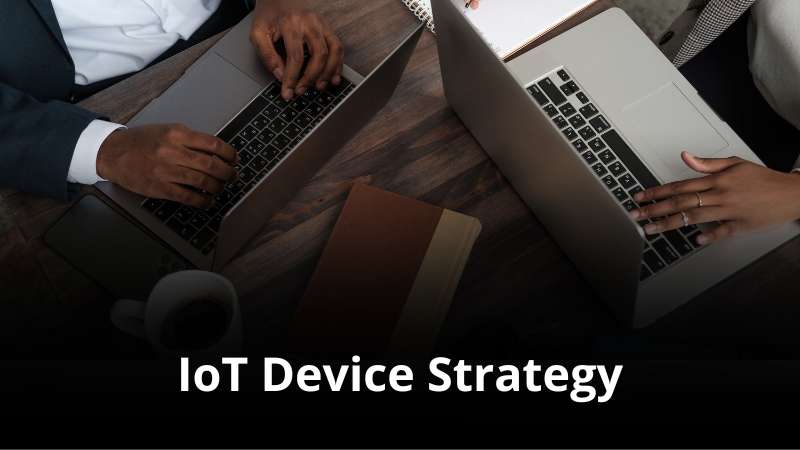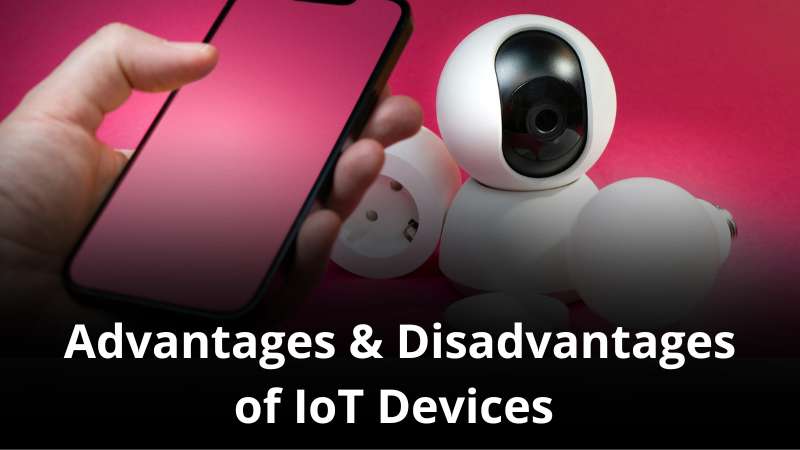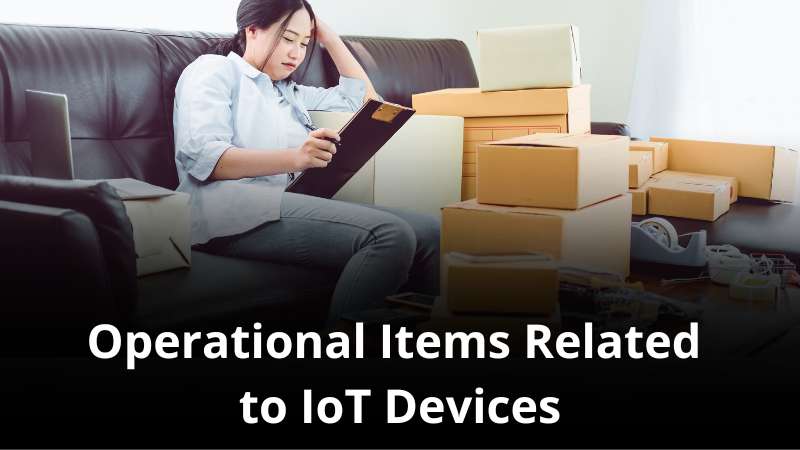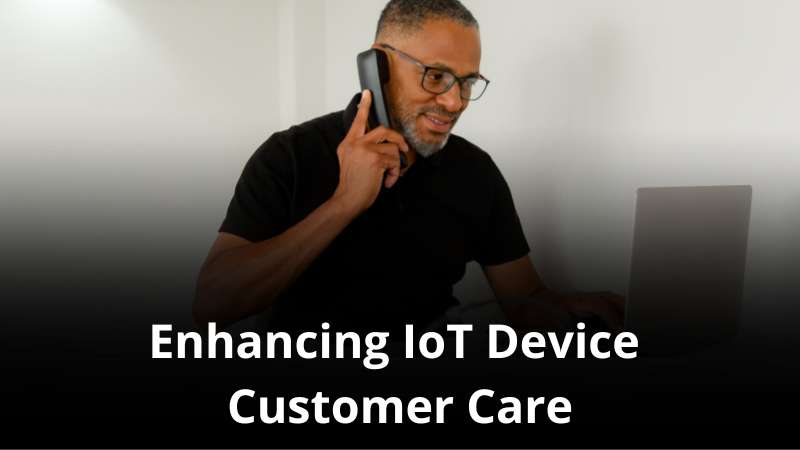The Advantages & Disadvantages of IOT Devices for MVNOs
What are the Advantages and Disadvantages of offering IoT Devices? The telecommunications landscape is evolving rapidly, with customer expectations shifting towards seamless integration of devices and services, especially within the Internet of Things (IoT). For Mobile Virtual Network Operators (MVNOs),
this presents both a challenge and an opportunity. While traditionally focused on providing network access, many MVNOs are now considering expanding their offerings to include the sale of IoT devices.
This strategic shift has the potential to unlock new revenue streams, enhance customer loyalty within specific verticals, and drive competitive differentiation in the burgeoning IoT market. Let’s provide a comprehensive analysis of the advantages and disadvantages of this approach, equipping MVNOs with the insights needed to make informed strategic decisions.
What do you need to know about the Advantages and Disadvantages
What are the advantages and disadvantages for an MVNO?
Let’s address the core advantages and disadvantages associated with MVNOs selling IoT devices, providing a focused examination of the key considerations that must be weighed before implementing such a strategy.
The advantages for an MVNO?
Selling devices offers several key advantages for MVNOs:
1. Increased Revenue Streams
Selling IoT devices provides an additional revenue stream beyond connectivity subscriptions, diversifying income and potentially increasing profitability.
To illustrate: If an MVNO sells 10,000 smart sensors per year with an average profit margin of €20 per device, this generates an additional €200,000 in annual revenue. This can be particularly important for MVNOs looking to tap into specific industry verticals or niche IoT applications.
Quantifiable Benefit: Diversification of revenue streams reduces reliance on basic connectivity subscriptions, making the business more resilient and allowing for growth in new markets.
2. Bundling Opportunities
Offering attractive IoT device-connectivity bundles can significantly incentivize customers, resulting in higher customer acquisition rates and increased average revenue per user (ARPU), especially within specific IoT solutions.
Specifically: Offering a 15% discount on the monthly data plan when purchasing a smart home hub or a fleet management tracker can increase customer acquisition within those segments by 10-20% and boost ARPU by 5-15%. Offering a “free” basic sensor with a 2-year connectivity contract for smart agriculture can also be a very attractive offer.
Quantifiable Benefit: Bundling can increase customer lifetime value (CLTV) by encouraging longer-term contracts and reducing churn within specific IoT deployments.
3. Enhanced Customer Acquisition
Offering a curated selection of relevant IoT devices or attractive deals on popular sensors, trackers, or gateways can be a strong draw for new customers looking for end-to-end IoT solutions.
As an illustration: Launching a promotion offering a popular GPS tracker for pet owners at a discounted price for new subscribers can attract a specific demographic. This is particularly effective when combined with targeted online advertising within relevant communities.
Quantifiable Benefit: A well-executed IoT device promotion can increase new customer acquisition within targeted IoT segments by 15-25% within a specific timeframe.
4. Improved Customer Retention
By offering upgrade programs for IoT devices or trade-in options for older models, MVNOs can encourage existing customers to stay with their service and adopt newer IoT technologies through them.
For instance: Implementing a trade-in program where businesses receive a discount on new industrial sensors when they upgrade their existing infrastructure through the MVNO can increase customer retention rates within the B2B IoT sector by 8-12%. This also positions the MVNO as a long-term technology partner.
Quantifiable Benefit: Reducing churn within valuable IoT customer segments has a significant impact on long-term profitability.
5. Stronger Brand Loyalty
Providing a seamless experience by offering both IoT devices and the necessary connectivity builds stronger customer relationships and fosters brand loyalty within specific IoT application areas (e.g., smart homes, asset tracking, industrial IoT).
For example: A customer who purchases a smart home security system and the associated cellular connectivity from the same MVNO experiences a simplified setup process and a single point of contact for support, thus leading to increased satisfaction and loyalty.
Quantifiable Benefit: Loyal IoT customers are more likely to expand their deployments with the MVNO and recommend their services within their respective industries or communities.
6. Competitive Differentiation
In a growing IoT connectivity market, offering a curated selection of devices tailored to specific use cases or exclusive deals on specialized IoT hardware helps an MVNO stand out from competitors primarily focused on basic connectivity.
To illustrate this: An MVNO specializing in low-power wide-area network (LPWAN) devices for smart city applications can carve out a niche market and attract a specific customer segment. Offering devices with pre-configured connectivity and security features can also be a strong differentiator.
Quantifiable Benefit: Differentiation can lead to increased market share within specific IoT verticals and enhanced brand recognition as an IoT solution provider.
7. Simplified Customer Experience
Providing a one-stop shop for both the IoT device and its connectivity simplifies the deployment process for customers, making it more convenient and appealing, especially for those new to IoT.
Specifically: A business can purchase a fleet tracking device and activate its cellular connection all in one transaction, eliminating the need to source connectivity separately and configure it.
Quantifiable Benefit: A streamlined purchasing and activation process can improve customer satisfaction and accelerate the adoption of IoT solutions.
8. Potential for Recurring Revenue
While the IoT device sale itself might be a one-time transaction, it often leads to a recurring revenue stream through the associated connectivity plan and potentially additional value-added services tailored for IoT, such as data analytics platforms or device management portals.
For example: A customer who purchases a smart agriculture sensor is likely to subscribe to a long-term data plan and may also opt for a premium service offering insights based on the sensor data, generating recurring monthly revenue for the MVNO.
Quantifiable Benefit: This recurring revenue provides a stable and predictable income stream, which is crucial for long-term business sustainability in the IoT sector.
The Disadvantages for an MVNO?
Selling devices also introduces several challenges:
Operational Challenges
1. Increased Operational Complexity
Managing a diverse inventory of IoT devices with varying technologies, logistics, firmware updates, security protocols, warranties, and return processes adds substantial complexity compared to simply providing connectivity.
For example: Implementing a secure over-the-air (OTA) update mechanism for thousands of different types of IoT devices requires dedicated infrastructure, expertise, and agreements with device manufacturers.
Quantifiable Impact: Increased operational costs and the need for specialized skills can impact profit margins if not managed efficiently.
2. Customer Service Demands Specific to IoT
Dealing with device-related issues in IoT requires specialized training and support for a wide range of devices and applications.
Specifically: Customers may require assistance with device setup, network configuration for different IoT protocols (e.g., MQTT, CoAP), data visualization, or troubleshooting connectivity problems specific to IoT devices, requiring customer service representatives with technical knowledge in IoT.
Quantifiable Impact: Increased call volumes and support requests requiring specialized knowledge can result in higher customer service costs and potentially longer resolution times.
3. Increased Sales and Marketing Complexity for Diverse IoT Solutions
Managing the sales and marketing of a diverse portfolio of IoT devices targeting different industries and use cases adds complexity to sales operations.
As an illustration: Segmenting the market and tailoring marketing messages for smart city solutions versus industrial automation requires careful planning and potentially a specialized sales team with expertise in different IoT verticals.
Quantifiable Impact: Inefficient segmentation and messaging can lead to lower conversion rates and increased marketing costs.
Financial Risks
1. Higher Upfront Costs and Inventory Management
Purchasing and stocking a variety of IoT devices, potentially with different connectivity requirements (e.g., NB-IoT, LTE-M, LoRaWAN), requires significant upfront investment and careful inventory management to avoid overstocking or stockouts.
To illustrate: Ordering a large quantity of various sensor types for different applications can tie up significant capital, particularly for smaller MVNOs.
Quantifiable Impact: This can impact cash flow and potentially limit investment in network infrastructure or other areas of the business.
2. Technology Obsolescence and Inventory Risk in a Fast-Evolving IoT Market
Holding inventory of IoT devices carries a higher risk of rapid technological obsolescence and price drops due to the fast-paced innovation in the IoT sector.
Typically: A new generation of sensors with improved accuracy or lower power consumption can quickly render older models less desirable, leading to potential losses for the MVNO if they hold significant inventory.
Quantifiable Impact: Inventory write-offs due to obsolescence can significantly impact profitability.
3. Potential Low Margin on Hardware and Intense Competition
Profit margins on IoT hardware can be thin, especially when competing with specialized IoT device manufacturers and distributors.
Specifically: These specialized players often have established relationships with manufacturers and can achieve better pricing, potentially undercutting MVNOs.
Quantifiable Impact: MVNOs may need to accept lower margins on hardware sales to remain competitive, impacting overall profitability.
Competitive Landscape
1. Competition with Specialized IoT Providers and Distributors
MVNOs face strong competition from established IoT device manufacturers, distributors, and system integrators who often have deep expertise in specific IoT verticals.
For example: Companies specializing in smart building solutions often have their own preferred hardware vendors and may not see the value in purchasing devices from an MVNO.
Quantifiable Impact: MVNOs may struggle to compete on device expertise alone and need to differentiate themselves through seamless connectivity integration and value-added services.
2. Dependence on a Wide Range of Manufacturers and Distributors
MVNOs become reliant on a potentially large number of external partners for sourcing diverse IoT devices and ensuring compatibility with their network.
As a result: Supply chain disruptions, firmware vulnerabilities in specific devices, or changes in pricing from multiple manufacturers can significantly impact the MVNO’s ability to offer a reliable and cost-effective IoT device portfolio.
Quantifiable Impact: This dependence increases complexity in vendor management and limits the MVNO’s control over the entire IoT solution.
What are the Advantages and Disadvantages for a Subscriber buying an IoT Device from an MVNO?
Subscribers are often drawn to MVNOs for their potentially competitive data plans tailored for IoT, flexible contract options, and sometimes bundled solutions that simplify IoT deployments. However, there are potential downsides, including a potentially limited selection of specific IoT devices compared to specialized vendors and the need to ensure device compatibility with the MVNO’s network.
Advantages of Buying an IoT Device from an MVNO
1. Simplified Procurement and Deployment
Purchasing both the IoT device and its connectivity from a single provider simplifies the procurement process and can streamline initial setup and deployment.
For example: A small business wanting to implement asset tracking can purchase the trackers and their pre-configured SIM cards directly from the MVNO, simplifying logistics and activation.
Quantifiable Benefit (Potential): Reduced complexity and faster deployment can be a significant advantage, especially for businesses or individuals with limited technical expertise in IoT.
2. Potentially Lower Overall Cost of Ownership through Bundled Plans
Even if the IoT device itself isn’t significantly cheaper, the overall cost of ownership can be lower due to potentially competitive data plans specifically designed for IoT applications offered by the MVNO.
Specifically: An MVNO might offer a data plan optimized for low data usage sensors at a lower monthly cost compared to standard mobile broadband plans, making the overall IoT solution more affordable.
Quantifiable Benefit: Emphasizes the long-term cost savings on connectivity, which is a recurring expense for IoT deployments.
3. Convenience of a Single Point of Contact for Support
Having a single provider for both the IoT device and its connectivity can simplify support and troubleshooting.
For instance: If a smart home device purchased from the MVNO experiences connectivity issues, the customer only needs to contact one company for assistance.
Quantifiable Benefit: Streamlined support can lead to faster issue resolution and improved customer satisfaction.
Disadvantages of Buying an IoT Device from an MVNO
1. Potentially Limited Device Selection
MVNOs may offer a more limited selection of specific IoT devices compared to specialized manufacturers or distributors who focus on particular applications or technologies.
For example: An MVNO might offer a few basic smart home sensors but lack the breadth of options available from dedicated smart home device retailers.
Quantifiable Impact: Customers with very specific IoT device requirements might not find what they need from an MVNO.
2. Potential Compatibility Issues
Customers need to ensure that the IoT devices offered by the MVNO are fully compatible with the MVNO’s network technologies (e.g., specific LTE bands, NB-IoT support).
Specifically: An IoT device purchased from an MVNO that primarily uses one type of network might not function optimally or at all on another network if the customer switches providers later.
Quantifiable Impact: Lack of clarity on compatibility can lead to customer dissatisfaction and returns.
3. Dependence on the MVNO for Device Support and Updates
Customers who purchase IoT devices from an MVNO may be reliant on the MVNO for firmware updates, security patches, and ongoing device support.
For example: If the MVNO decides to discontinue support for a particular IoT device model, customers might be left without updates or assistance.
Quantifiable Impact: Long-term support and software updates are crucial for the longevity and security of IoT devices.
Frequently Asked Questions (from an MVNO point of view)
1. What types of IoT devices should we stock, considering different connectivity options (e.g., NB-IoT, LTE-M, LoRaWAN)?
Instead of trying to offer everything, an MVNO should identify one to three key verticals where they have an advantage or see significant market potential, such as smart homes, asset tracking, wearables for specific demographics, or smart agriculture. It’s crucial to prioritize devices that align with the MVNO’s core network capabilities and any specialized IoT network technologies they support, like NB-IoT, LTE-M, or LoRaWAN, as offering devices that seamlessly integrate with their network will simplify setup and support. Thoroughly research and select devices that have proven market demand and address specific customer needs within the chosen verticals, considering factors like price point, features, reliability, and ease of use. Forming strategic partnerships with reputable IoT device manufacturers is also important to ensure quality, compatibility, and access to technical support, and exclusive partnerships could provide differentiation. Finally, it’s advisable to begin with a small, well-curated selection of devices and gradually expand based on customer feedback and evolving market trends.
2. How do we manage inventory and logistics for a diverse range of IoT devices?
Managing inventory and logistics effectively requires implementing robust demand forecasting based on market research, pre-orders, and pilot programs to optimize stock levels and minimize both overstocking and stockouts. Partnering with a third-party logistics (3PL) provider experienced in handling electronics and IoT devices for warehousing, order fulfillment, and shipping can be highly beneficial. A robust inventory management system is essential to track stock levels, monitor device lifecycles, and provide alerts for low stock or potential obsolescence. Building strong relationships with device suppliers is key to ensure timely delivery and potentially negotiate flexible ordering options. For certain niche or high-cost devices, exploring drop-shipping arrangements with manufacturers or distributors can minimize upfront inventory investment and risk.
3. What are the warranty and return procedures for different types of IoT devices from various manufacturers?
Developing clear and standardized warranty and return policies that comply with consumer protection laws while considering the specific warranties offered by device manufacturers is crucial. Clearly define warranty responsibilities with each device manufacturer and understand their repair or replacement processes. Implementing a tiered support system where basic troubleshooting is handled by the MVNO’s customer service, and more complex hardware issues are escalated to the manufacturer, can improve efficiency. A clear Return Merchandise Authorization (RMA) process for handling defective devices should be established, including instructions for customers, return shipping procedures, and timelines for resolution. Lastly, it’s vital to clearly communicate the warranty terms and return procedures to customers at the point of sale to manage expectations.
4. How can we mitigate the risk of rapid technology obsolescence in the IoT device market?
To mitigate the risk of rapid technology obsolescence, MVNOs should prioritize devices that are based on open standards or have the potential for firmware updates to extend their lifespan. Considering shorter procurement cycles and smaller order quantities allows for quicker adaptation to new technologies. Exploring the option of offering IoT devices on a lease or subscription basis can facilitate easier upgrades and reduce the risk of being left with outdated inventory. Implementing trade-in programs that allow customers to upgrade to newer devices at a discount can also help manage the lifecycle of older devices. Continuously monitoring the IoT technology landscape and anticipating upcoming trends is essential for making informed decisions about which devices to stock.
5. What are the specific legal and regulatory considerations for selling connected devices, including data privacy and security requirements for IoT?
Compliance with all applicable consumer protection laws regarding product safety, warranties, and returns is paramount. MVNOs must understand and comply with data privacy regulations related to the data collected by the IoT devices they sell and the connectivity they provide, such as GDPR or CCPA, and implement appropriate data security measures. Considering recommending or prioritizing devices that adhere to recognized IoT security standards and best practices is also important. Ensure compliance with any specific telecommunications regulations related to the sale and activation of connected devices. Seeking consultation with legal counsel is advisable to ensure full compliance with all relevant laws and regulations.
6. How can we manage device financing options or subscription models for IoT hardware?
Managing device financing can involve partnering with established financing companies to offer installment plans or lease-to-own options for customers. For larger business customers, offering in-house financing might be considered, but this requires careful risk assessment and management. Integrating the cost of the device into a monthly subscription plan that includes connectivity and potentially other services can make higher-cost devices more accessible. Implementing appropriate credit check procedures is necessary if offering financing options to mitigate the risk of defaults. It’s crucial to ensure transparent terms and conditions for any financing or subscription agreements.
7. How do we ensure the security of the IoT devices we offer and the data they transmit?
Ensuring the security of IoT devices and the data they transmit involves partnering with manufacturers who have a strong track record of security and provide regular firmware updates. Consider conducting independent security testing or partnering with security firms to assess the vulnerabilities of the devices offered. The MVNO’s network infrastructure should provide secure connectivity for IoT devices, including encryption and authentication protocols. Educating customers on best practices for securing their IoT devices and networks is also important. Finally, consider offering optional security services, such as device monitoring or vulnerability scanning, as a value-added service.
8. What value-added services (e.g., data analytics platforms, device management portals) should we consider offering alongside IoT devices?
For certain verticals, offering a data analytics platform to visualize and analyze the data collected by the devices can be a significant differentiator and revenue stream. Providing customers with a user-friendly device management portal to manage their connected devices, including activation, monitoring, and basic troubleshooting, enhances the user experience. Offering customizable alerting and notification services based on device data can also be valuable. Exploring integrations with other popular business or consumer platforms can increase the stickiness of the offering. For more advanced customers, providing APIs that allow them to integrate device data with their own applications can cater to a wider range of needs.
Summary
Selling IoT devices can offer MVNOs significant opportunities for growth in a rapidly expanding market, including increased revenue, stronger customer relationships within specific verticals, and competitive differentiation. However, it also introduces operational complexities related to device management, customer support for diverse technologies, financial risks associated with inventory and obsolescence, and competition from specialized IoT players. Before implementing an IoT device sales strategy, MVNOs must carefully weigh the advantages and disadvantages, conduct thorough market research to identify profitable niches, develop robust operational processes for device handling and support, and ensure adequate expertise in IoT technologies and security.
By addressing these key considerations, MVNOs can make informed decisions and maximize their chances of success in the IoT device market. A phased approach, starting with a focus on specific IoT verticals and a limited selection of well-supported devices, may be a prudent strategy for many MVNOs entering this dynamic landscape.
